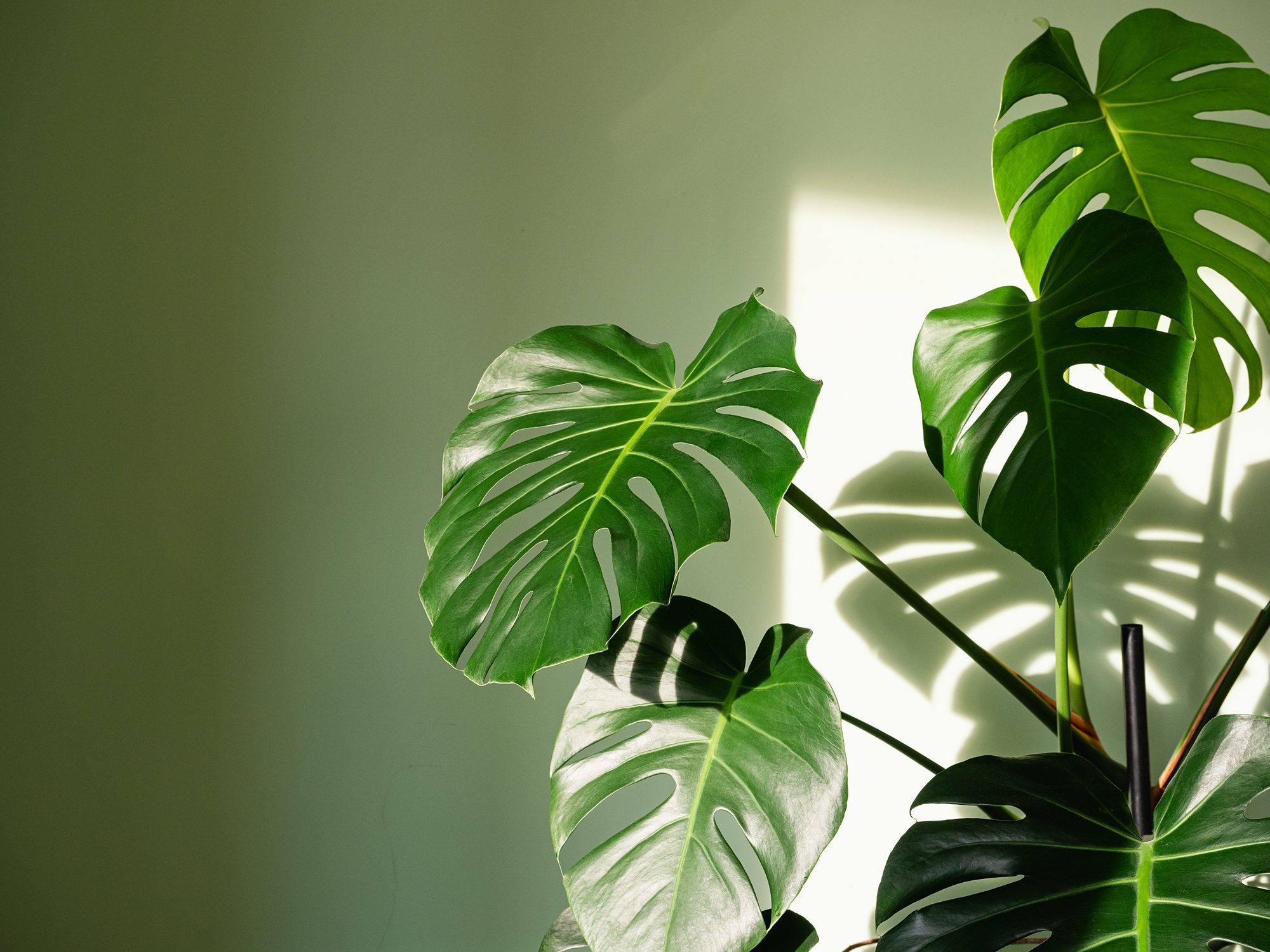Whether you call it swiss cheese plant or split-leaf philodendron, here's how to care for the impressive Monstera deliciosa as a houseplant.

Monstera Plant Care and Growing Tips

On This Page
Monstera Plant Benefits

This beloved houseplant, Monstera deliciosa, is actually a climbing vine, with massive broad leaves that can reach up to 3 feet across. According to Matt Slaymaker, product manager at LivelyRoot.com, their popularity is due to their reputation for being adaptable and low-maintenance. “Monsteras are a fan favorite because of their unique and tropical look,” he says. “Their iconic split (fenestrated) leaves are funky and exotic, and they are often considered easy to care for, thriving in a variety of indoor environments.”
In addition to the popular common green variety, Matt suggests looking out for Monstera ‘Thai Constellation’, noting: “This new variety sports white splotches and variegations on the leaves, adding a whole new level of spunk to this classic houseplant favorite!”
How to Grow a Monstera Plant
- Scientific name: Monstera deliciosa
- Common names: Swiss cheese plant, split-leaf philodendron, Mexican breadfruit
- Hardiness zones: 10 to 11, or grow as a houseplant
- Light needs: Indirect light
- Water needs: Moist soil
- Size: Climbing vine, leaves up to 36 inches wide
Monstera prefers moist soil and indirect light, mimicking its wild conditions as a plant of the rainforest floor. It’s fairly adaptable to home growing conditions, but there are a few key things to remember.
“Monstera grows best in bright, indirect light,” says Matt. He recommends keeping the plant out of the direct sun to avoid burnt leaves, but also notes that too little light can mean that the leaves may not develop their distinctive “split” appearance. If necessary, you can use a sheer curtain to filter the light from a nearby window.
In its native Central American rainforests, swiss cheese plant climbs up tree trunks, stretching up to 70 feet as it crawls toward the canopy. As a large houseplant, though, it usually tops out around 6 to 8 feet tall at most. Provide a small trellis or stakes in the pot to support your plant as it climbs.
Split-leaf philodendron plants don’t require repotting as often as some houseplants, since they’re actually quite tolerant of rootbound conditions. When roots have spread fully to the bottom and sides of the pot, you can bump it up to a pot a few inches wider and deeper.
Watering Monstera Plants

Like many houseplants, swiss cheese plants prefer moist soil, but can’t tolerate soggy conditions. “It’s important to never let your monstera sit in water, so good drainage in your pot is a must,” Matt cautions. “Let the first inch or two of the soil dry out between waterings.” Otherwise, you risk root rot.
Rainforest plants like split-leaf philodendron need high humidity, which can be a problem in many homes (especially during the winter). Matt offers this tip: “As a home gardener, misting your monstera every once in a while with a spray bottle will do the trick.” You can also set the pot in a shallow dish of pebbles filled with water (be sure to keep the bottom of the pot elevated above the water, though).
Monstera Plant Problems and Pests

Common houseplant pests and problems like mealybugs or powdery mildew may sometimes affect split-leaf philodendron. “If you do find yourself with pests, mix up some dish soap and water and spray the plant to kill them,” recommends Matt. “If it’s an infestation, try a tougher treatment, such as neem oil.”
Though it’s not particularly susceptible to any major problems, you may occasionally notice yellowing leaves. In this case, trim them off, then be sure you’re not over watering or try increasing the light exposure. It’s also important to occasionally wipe off your plant’s big shiny leaves, as dust can hinder photosynthesis.
Is a Monstera Plant Toxic to Pets?
Yes. All parts of your swiss cheese plant are dangerous for cats or dogs to chew on or ingest. If you notice signs of mouth irritation, excessive drooling, vomiting, or difficulty swallowing and suspect your dog or cat may have been exposed, contact your vet immediately.
Propagating Monstera Plants
“Propagating Monsteras is super easy!” Matt raves. “All you have to do is cut off a piece of stem that includes a node, the raised “bump” on the stem where aerial roots and leaves come out. Then place this cutting in a glass of water or a small pot of moist soil. I prefer using a small glass of water and allowing some roots to grow before placing it into a pot. Soon, your little cutting will grow into a full-sized plant!”
About the Expert
Matt Slaymaker works as a product manager at LivelyRoot.com. He received a degree in horticultural sciences from California Polytechnic University, San Luis Obispo, and has worked in all facets of the horticulture industry. Before joining Lively Root, Matt oversaw the greenhouse operations at a living wall company, growing and propagating tropical houseplants of all kinds.
Sources
- Lively Root – Split leaf philodendron
- University of Connecticut Home and Garden Education Center – Monstera deliciosa
- North Carolina Cooperative Extension – Monstera deliciosa
- ASPCA – Swiss cheese plant




















